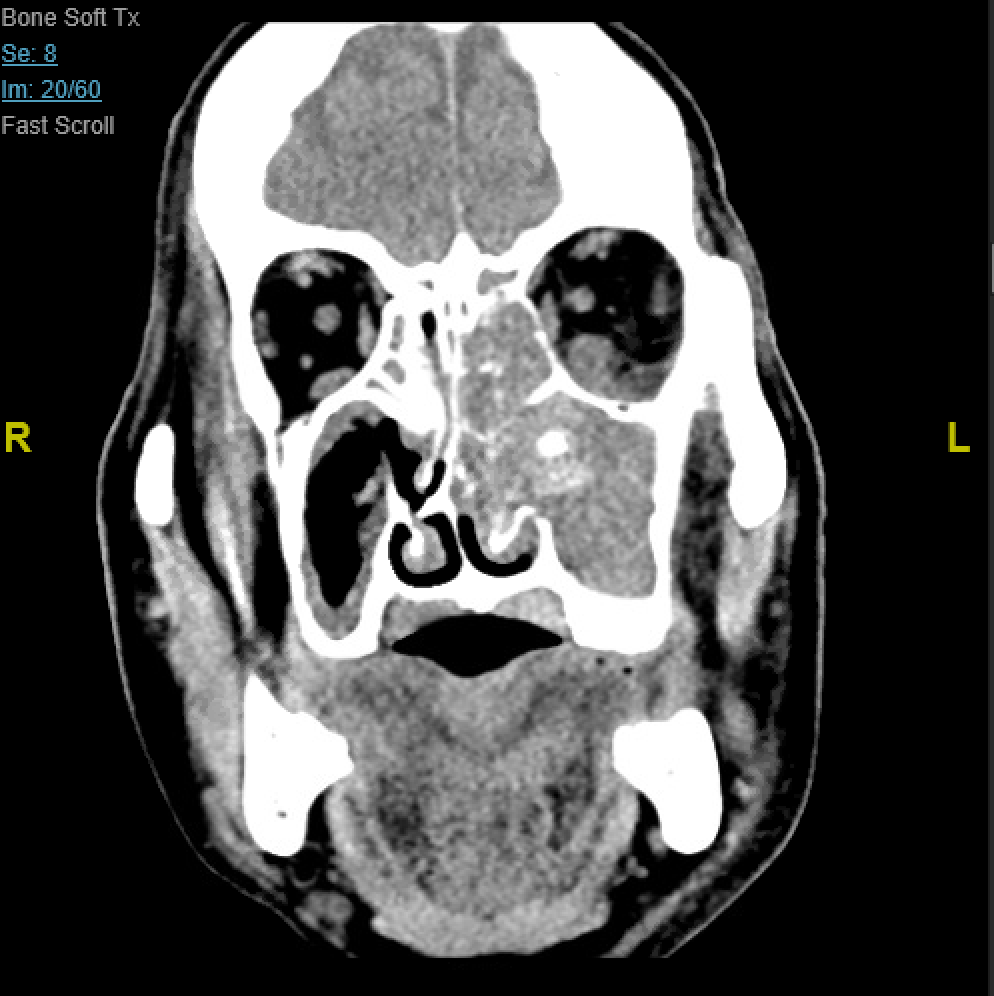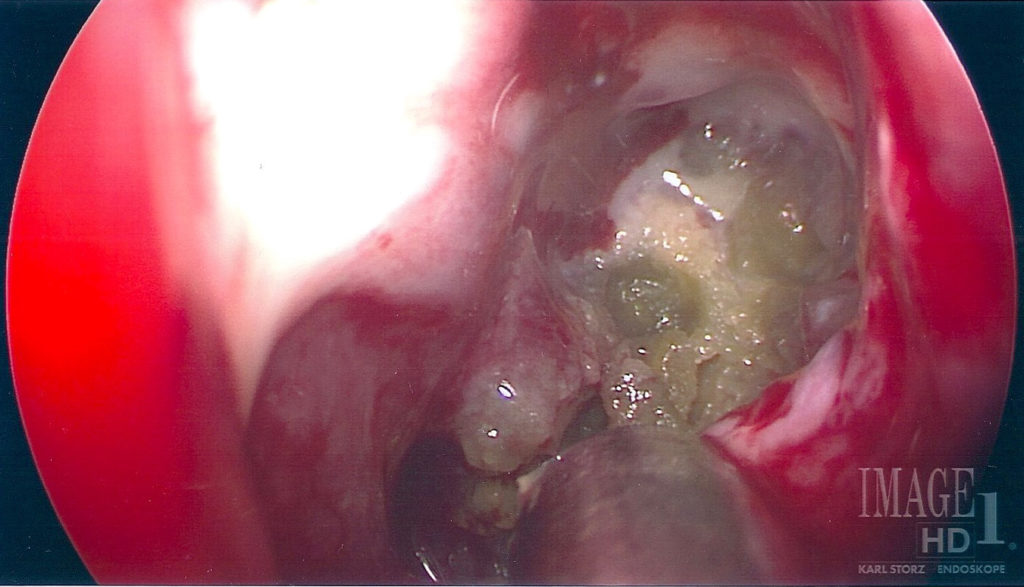What is a Fungal Sinusitis?
- Posted on: Jun 26 2020
The paranasal sinuses are air-filled pockets that directly communicate to our nasal passages. We have 4 pairs of these sinuses. During normal function air and mucus can freely travel in and out of the sinuses. However, during a sinus infection the narrow passages can get blocked, therefore trapping mucus and air pressure within the sinuses. The secretions can then get further infected with viruses, bacteria, or fungus.
Most cases of acute sinus infections are thought to be viral. Out body’s immune system should be able to fight this within a few days. Occasionally, the infecting organism could be a bacteria. Usually we expect to see yellow or green discharge, possibly with a fetid odor, accompanied by fever, chills, and headaches.
Less often, the infection could be from a fungus source. These infections are usually more chronic in nature. Most of these infections occur on one side only, and they usually involve the maxillary sinus (the large sinus below the eyes). Many patients have been tried on several antibiotics in the past and have seen no significant improvement in their overall symptoms. Examination of the nose and sinuses, including performing nasal endoscopy, might not reveal an obvious fungus. Even cultures of the nose might not reveal a positive identification of the fungus. The best way to identify a fungus infection vs other types is to perform a CT of the sinuses and document a number of characteristic features.

Initial treatment for fungal infections usually involves aggressive nasal saline rinses for irrigation, anti-inflammatory medications that can be given both via nose sprays or orally, as well as systemic anti-fungal medications. Unfortunately there is no good blood supply to within the fungus ball the carry the medications given orally, and most infected sinuses might be closed shut so that topical washes and sprays might not reach the destination either. In many cases, the fungus ball within the sinus needs to be cleaned through surgical procedure. This is typically done through endoscopic sinus surgery under anesthesia. The typical findings are a ball of inspissated secretions and fungus debris that has caused quite a bit of inflammatory changes within the sinus. Biopsy and culture of the material is typically also performed during the procedure.

Most patients will still need a regimen of medical therapy for the sinus infection even after the surgery. This could vary according to each patient’s individual presentation.
In some cases, if the fungal infection is not diagnosed early enough, the fungus can become invasive into surrounding structures. This could affect the eyes and the brain and cause potentially life-threatening complications.
Tagged with: CT, ear nose throat, ENT, fungal, fungal infection, fungal sinusitis, fungus, infection, Isaac Namdar, Isaac Namdar MD, New York, new york city, ny, NYC, Otolaryngology, Otorhinolaryngology, sinus, sinusitis

